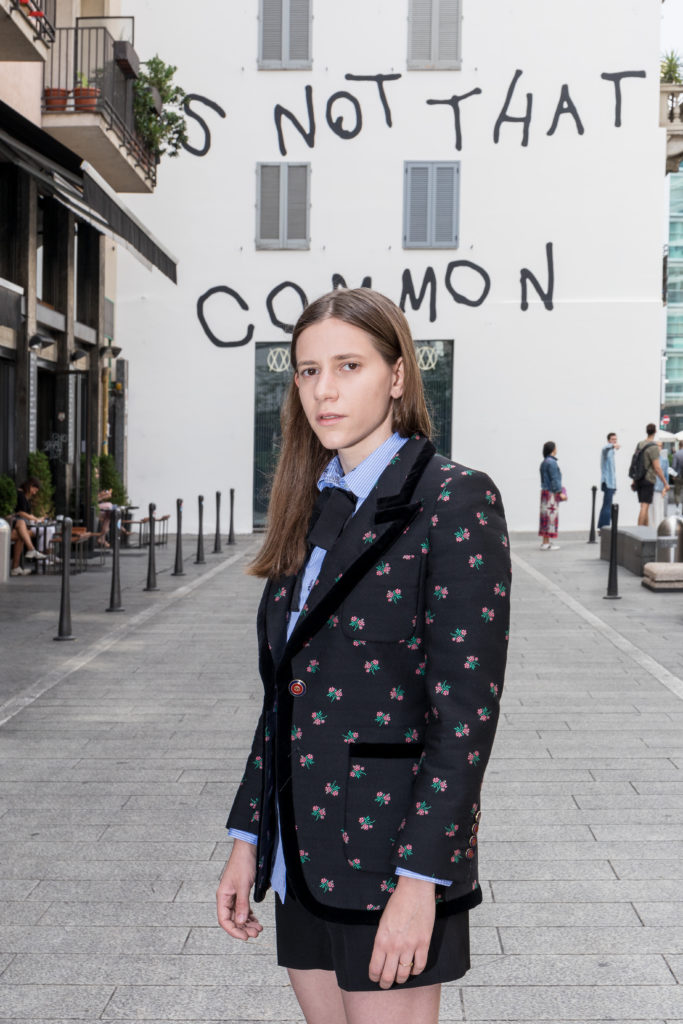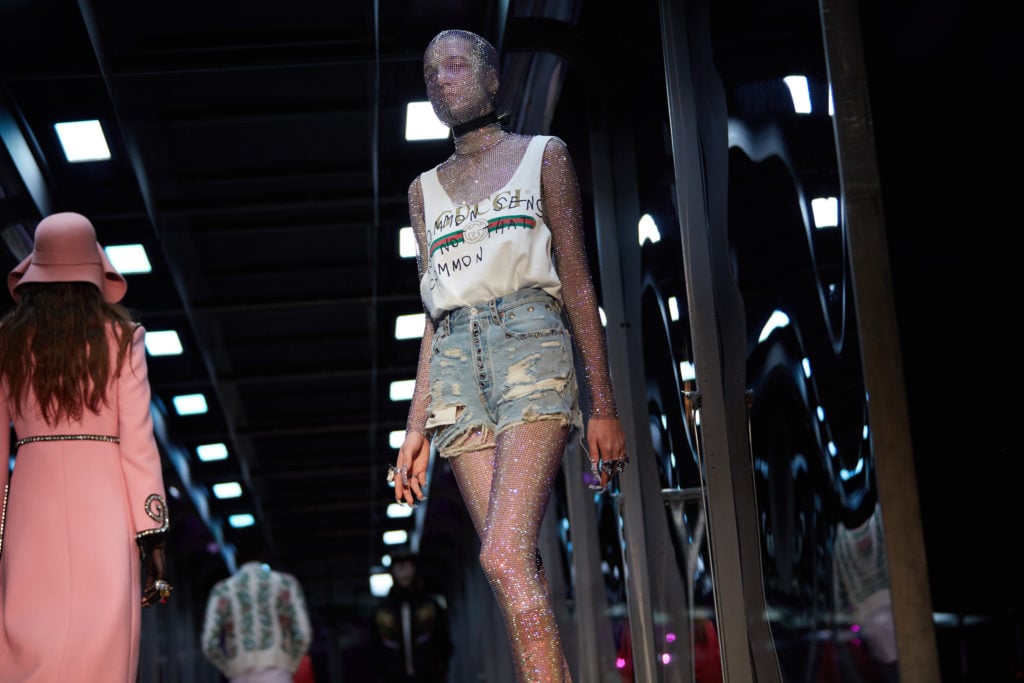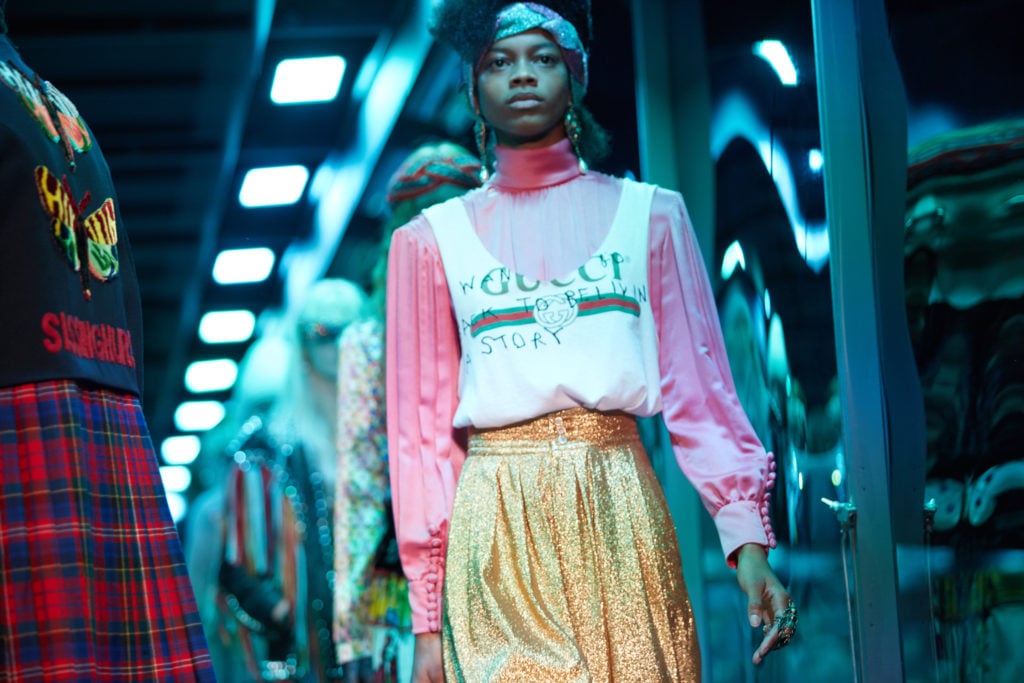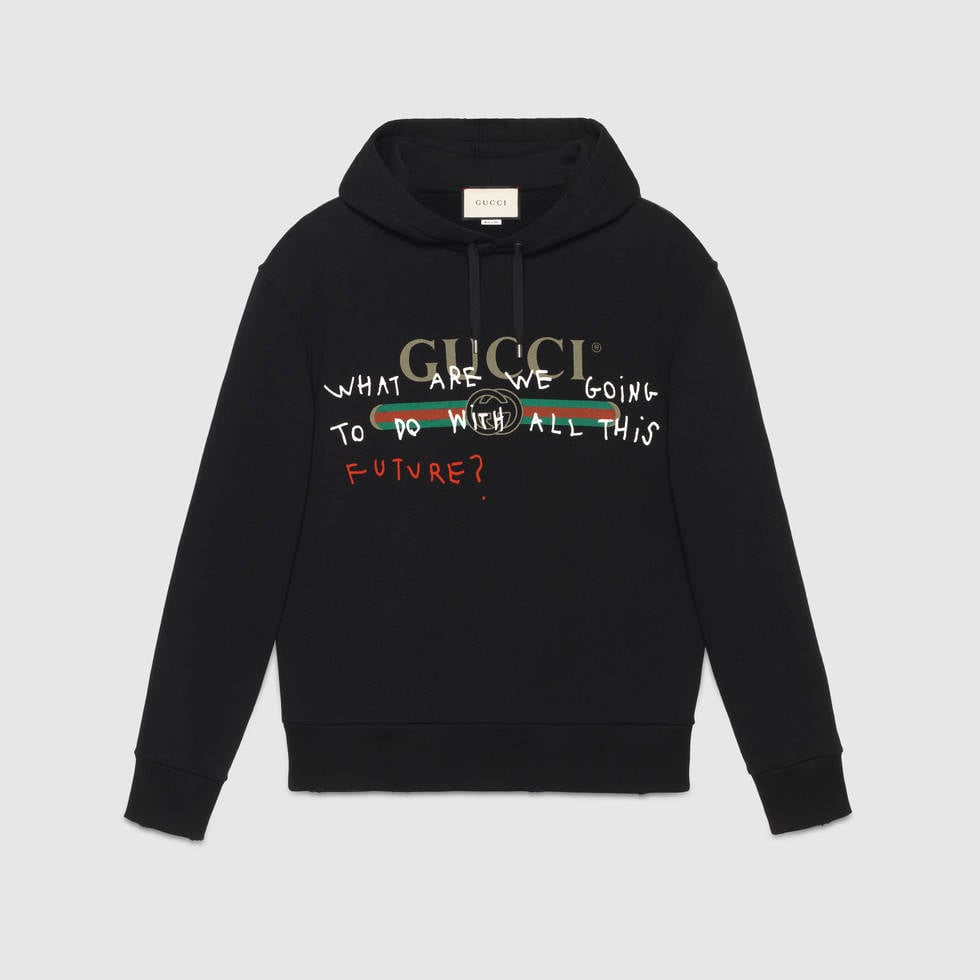People
Gucci Invited the Artist Coco Capitán to Deface Its Clothes. Here’s Why You Should Pay Attention
The Spanish artist discusses the process behind her popular new collaboration with the designer.

The Spanish artist discusses the process behind her popular new collaboration with the designer.

Max Berlinger

When designer Alessandro Michele took over as creative director of the Italian label Gucci in 2015, he immediately replaced the brand’s signature slick sensuality with a Rococo maximalism littered with tapestry-like embroideries, Renaissance-era allusions, and erudite references to philosophy—all juxtaposed with a swaggering sense of casual streetwear. At Michele’s Gucci, it’s not uncommon to see both tiered lace gowns and ripped jeans in the same collection.
Earlier this year, when Michele presented his Fall/Winter 2017 collection, certain items—logo T-shirts, hooded sweatshirts, the brand’s money-making bags—were scribbled with gnomic axioms like “Common sense is not that common,” or “What are we going to do with all this future?” The phrases were works of text art by the photographer and artist Coco Capitán.
A nymph-like figure who talks about art in ways both grand and humble, the Spanish-born, UK-based Capitán spoke to artnet News about her collaboration with Gucci, which is in stores now. Below are highlights of the conversation, edited and condensed for length and clarity.
As someone who works in both fine art, which allows for creative license, and photography, which is more about capturing a real moment, how do you navigate between these two mediums? Do you have a preference for one or the other?
In my experience, both mediums end up being very similar. I use photography almost as a research tool, meaning it’s my primary instrument to look at a new place or individual for the first time. I don’t do drawing or sketching or anything like that, but I do annotate my conclusions or feelings in writing. Then, if it’s a subject that really intrigues me, and I feel needs a deeper exploration, I consider making an art piece out of it. Sometimes the art piece can be a printout of this primary research, or it could be a painting that includes some of my writings. I don’t think I can exclude either of the two mediums from my process.

One of the collaborative looks on the runway. Photo courtesy of Gucci.
You work in fashion as a photographer and now as a designer, too, in a way. How does making art, but with commercial constraints, affect the way you work?
It reminds me of when I was given briefings in art school—sometimes you’re given themes that you’re very interested in; other times, not so much. Freedom can be a prison in that way. Working on commissions resolves the initial problem of what to do and makes you get straight to the point. Having someone expecting to see the results of your projects and having a deadline? That keeps you going and making an amount of work that I doubt you would be producing otherwise.
Before I started working on commissions, I would finish a personal project and think it wasn’t good enough to be shared—and I would do that on repeat. When you need to hand over your work, you forget about your pickiness and realize that you just have to keep on going, and that your work is not for you to judge permanently.
The other side is that, however, is that you get tired of other people telling you to change and rearrange your work to meet their expectations when you perhaps don’t share their criteria, or maybe it’s just a matter of taste. But you also encounter clients who encourage you to do as you like, are attentive to your opinion, and do not intend to change any of your content.
Working on commissions inspires me to find my own time to do projects that are not so subjected to the opinion of others, and I find peace in the balance.
To me, there’s a wistful sense of longing in a lot of your work—would you agree? Is that something you seek to capture?
Perhaps, but it’s not that intentional. In a way, isn’t this quality the very essence of photography, in the sense that a photograph always looks at the past? No matter how ‘new’ its content is, a photograph is always about capturing a moment in time so you can look at it later. When you are presented with a photograph, you immediately know that you are looking at that past—even if only a couple of minutes later—and you are aware that the moment is already gone.

Another look as seen on the runway. Photo courtesy of Gucci.
You’ve said that fashion can be art, but that it depends on the sentiment of the viewer and creator. What properties elevate a design to the status of art from mere clothing, or fashion?
Today anything can be art if you name it as such, and I am comfortable with that freedom. But something being art doesn’t immediately mean that it’s good art, or ‘good’ at all. In the terms of fashion, I cannot find a way to generalize it. It’s necessary to look at every individual case and often just a matter of opinion.
To deface the traditional Gucci logo, as you do in this collaboration, might seem like a protest against traditional notions of luxury. Does that ring true to you?
It wasn’t so much a protest but perhaps a reinvention of the way we are used to looking at luxury.
In your work, would you say you’re very process-oriented, or more concerned with the final outcome? For instance, when you took on this project, did you have a clear idea of what you wanted to do, or did you work with Alessandro on developing certain ideas or themes?
I worked with Alessandro and other members of the team. I think a balance is needed between the two. A good final result normally comes from well-informed research but, at the same time, why would you expend so much time working on something if the final outcome is not up to your own expectations?

One of the looks in stores now. Photo courtesy of Gucci.
What did you hope to communicate with this collaboration? Did you want to say anything about the luxury apparel system, or the ways in which we communicate our beliefs through what we wear?
I wanted to place my questions in the clothing and outside of the printed publications and galleries where they exclusively existed before this collaboration came about.
Was there anything that surprised you in the course of doing this project?
I felt very privileged to have the opportunity to incorporate my written work in a commission of such scale for the first time. Alessandro and the house have been extremely supportive of my work, and I can only be grateful.
As an artist, what benefits and drawbacks are there to using clothes as a medium?
I see it more as a benefit than anything else. I don’t think my work is meant to be exclusive to clothing as a medium, but when you find a rare collaboration like this one, I only see it as an extension of its traditional media and context.